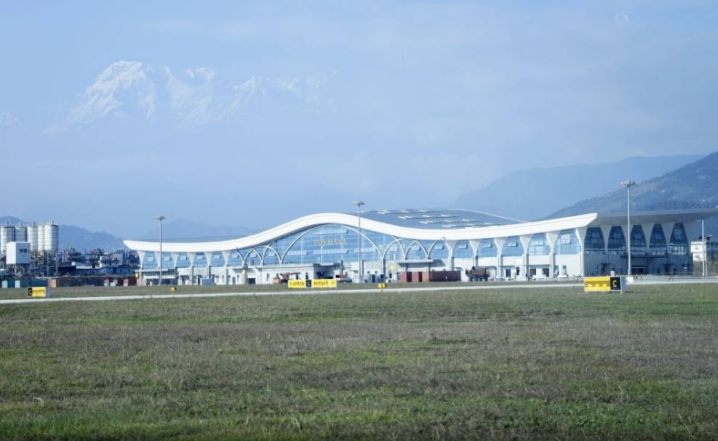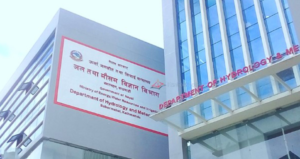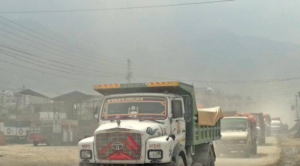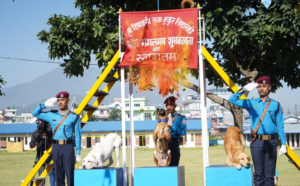Pokhara International Airport: High corruption, low traffic

Agency: Nepal’s ambition to strengthen its aviation infrastructure through the development of Pokhara International Airport (PIA) has hit major setbacks due to a high-profile corruption scandal and operational challenges. Originally envisioned as a regional hub to draw international tourists to the Annapurna trekking region, the airport has instead become a symbol of financial mismanagement, poor construction quality, and complex geopolitical entanglements.
Widespread media coverage has highlighted both the scale of high-level corruption and the airport’s surprisingly low passenger traffic, raising concerns over broader geopolitical and economic implications, including damage to Nepal’s reputation and future infrastructure prospects. Amid heated debates in parliament, a parliamentary panel was formed to investigate the corruption, revealing systemic flaws in Nepal’s infrastructure development processes. The case of PIA underscores the urgent need for transparency, accountability, and stronger governance in national development projects.
The project, launched in 2013 and opened in January 2023, cost approximately Rs 22 billion (US$ 216 million), primarily funded by a 20-year loan from China’s Export-Import Bank, with additional support from the Asian Development Bank and the OPEC Fund for International Development. The contract was awarded to a Chinese state-owned engineering firm under an Engineering, Procurement, and Construction (EPC) model to establish Pokhara as a key aviation gateway. However, a parliamentary investigation by the Public Accounts Committee (PAC) in April 2025 uncovered irregularities amounting to Rs 14 billion (approximately US$ 105 million), revealing deep-rooted corruption.
Financial mismanagement was a central concern. The project’s initial cost estimate of US$ 305 million was reduced to US$ 216 million following public outcry, yet expenses were inflated through fraudulent practices. Payments of US$ 5.5 million were made for soil transport that never took place, as confirmed by the PAC. The Civil Aviation Authority of Nepal (CAAN) granted unauthorised exemptions on customs duties, tariffs, and value-added tax, totalling Rs 2.22 billion, to the contractor without contractual basis, providing undue financial benefits. Furthermore, funds were disbursed for incomplete infrastructure, including a fuel supply facility and an HVAC system, which were the contractor’s responsibility. These payments lacked supporting documentation, suggesting potential collusion between CAAN and the contractor.
Administrative failures by CAAN exacerbated the scandal. Construction commenced before consultants were appointed, bypassing international oversight standards and allowing deviations from specifications. A Nepali consultancy was selected without competitive tendering, raising concerns about transparency and favouritism, with payments made without rigorous scrutiny. CAAN’s failure to enforce contract compliance enabled the contractor to cut corners, contributing to the project’s shortcomings. The Commission for the Investigation of Abuse of Authority (CIAA) launched an inquiry in November 2023, prompted by international media coverage, but faced resistance from CAAN in accessing project documents, indicating attempts to conceal irregularities.
Geopolitical tensions have significantly hindered the functionality of Pokhara International Airport (PIA). Although China designated it a flagship Belt and Road Initiative (BRI) project, Nepal rejected this label, noting the 2013 agreement predated the BRI and citing concerns over straining ties with India. India’s refusal to grant flight routes over its airspace has limited PIA to a single weekly international flight on the Pokhara-Lhasa route, effectively making it a financial burden often referred to as a “white elephant”. The US$ 216 million loan from China Exim Bank has become an economic strain, with the airport generating insufficient revenue to meet debt obligations. The airport’s underutilisation has disappointed local businesses expecting a tourism boom, further straining Pokhara’s economy and undermining the project’s economic potential.
The CIAA’s investigation continues to face challenges in accessing critical documents, reflecting efforts to obscure the extent of mismanagement. The PAC’s April 2025 report called for accountability, focusing on CAAN and the contractor; however, critics argue that the scale of corruption suggests political complicity. The omission of political accountability has raised concerns about selective investigations, as high-level approvals were likely required for such significant irregularities.
CAAN has defended the project, asserting that PIA meets international standards, including ISO certification, and that allegations of corruption lack sufficient evidence. Payments to the contractor reportedly followed documented procedures, and no international aviation authority has flagged safety concerns. However, these defences are widely criticised as politically motivated, given the PAC’s detailed findings and the ongoing CIAA probe, which point to systemic failures in oversight and procurement.
The scandal at PIA underscores broader challenges in Nepal’s infrastructure development. Financial irregularities, totalling Rs 14 billion, combined with technical deficiencies, have compromised the airport’s safety and functionality. Geopolitical dynamics, particularly India’s flight route restrictions, have exacerbated air traffic constraints. The project’s failure to achieve its tourism objectives highlights the need for robust anti-corruption measures, transparent procurement, and alignment with Nepal’s economic and diplomatic priorities. Ongoing investigations may lead to accountability, but systemic reforms are essential to prevent similar failures in future infrastructure projects. Without addressing these issues, Nepal risks further economic strain and loss of public confidence in its governance.




